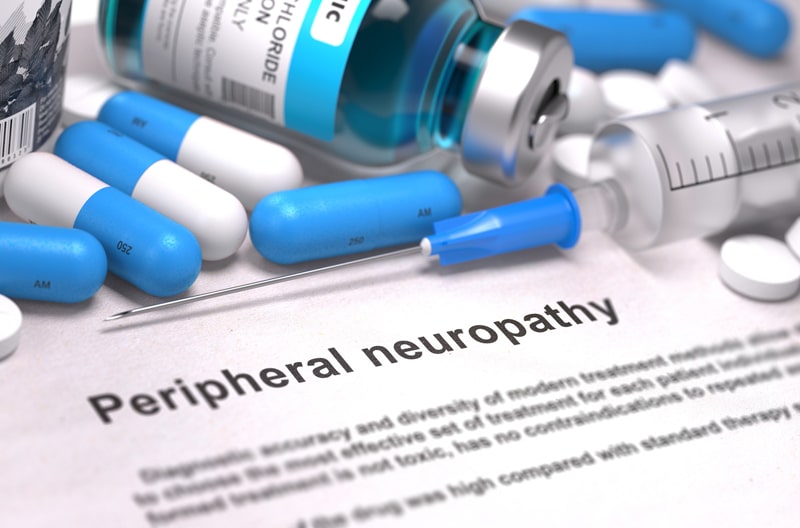The peripheral nervous system consists of an intricate network of nerves that connects the brain and spinal cord to the rest of the body. Peripheral neuropathy develops when these nerves become diseased or damaged and disrupt the communication between the brain and other parts of the body. The nerve damage can cause pain, impair muscle movement, and affect normal sensation in the arms and legs. Coders in companies offering coding and physician billing services are knowledgeable about nervous system anatomy and conditions, which is necessary to assign the right ICD-10 codes to report diagnosis of peripheral neuropathy.
There are different types of neuropathy. Mononeuropathy refers to damage to a single peripheral nerve, while polyneuropathy is a condition where multiple peripheral nerves throughout the body malfunction at the same time.
Hereditary neuropathies are genetically passed from parent to child. Acquired neuropathies are caused by environmental factors such as toxins, trauma, illness, or infection. When the cause cannot be identified, the condition is called idiopathic neuropathy.
Causes
According to the National Institute of Neurological Disorders and Stroke (NINDS), there are more than 100 types of peripheral neuropathy. An estimated 30 million Americans suffer from some type of this disease (www.foundationforpn.org). Common causes of neuropathy include:
- Diabetes – Diabetic neuropathy, the most common type of peripheral neuropathy, affecting 60% to 70% of people with diabetes.
- Trauma – Nerve injury caused by falls, accidents, sports injuries, or surgery as well as repetitive stress or any condition that compresses or damages a nerve (such as carpel tunnel syndrome).
- Medications, especially certain chemotherapy agents, drugs to treat HIV infection, anticonvulsant drugs, and heart and blood pressure medications
- Nutritional and vitamin deficiencies
- Long-standing alcohol use
- Kidney, liver and lung disease, or other critical illness
- Hypothyroidism and pituitary disorders
- Infections and autoimmune disorders such as rheumatoid arthritis
- Benign or cancerous tumors that put pressure on nerves
- Exposure to environmental and industrial toxins
Symptoms
The symptoms of peripheral neuropathy depend on which nerves are affected: sensory, motor, or autonomic. Common symptoms include: muscle weakness, cramping, and atrophy; loss of reflexes, coordination and balance; extreme sensitivity to touch; blurred vision; decreased or excessive sweating and heat intolerance; difficulty swallowing or breathing; inability to sweat; dizziness and fainting, and sexual dysfunction.
Diagnosis
A thorough medical history and physical exam is the first step in diagnosing peripheral neuropathy. Based on the results, the neurologist may order the following: nerve conduction and nerve function tests, electromyography (EMG), nerve/skin biopsy, and imaging tests to identify tumors, herniated discs, or other abnormalities that could be exerting pressure on nerves. Blood tests and other lab exams will be recommended to understand the underlying conditions that may cause a neuropathy or cause complications.
ICD-10 Codes for Peripheral Neuropathy
The peripheral autonomic neuropathy ICD-10 codes fall in the category G90 Disorders of autonomic nervous system, in the section titled “Other disorders of the nervous system.”
G90.9 Disorder of the autonomic nervous system, unspecified
Codes related to G90.0 are as follows:
- G90.512 – Complex regional pain syndrome I of left upper limb
- G90.513 – …… bilateral
- G90.519 – Complex regional pain syndrome I of unspecified upper limb
- G90.52 – Complex regional pain syndrome I of lower limb
- G90.521 – Complex regional pain syndrome I of right lower limb
- G90.522 – Complex regional pain syndrome I of left lower limb
- G90.523 – …… bilateral
- G90.529 – Complex regional pain syndrome I of unspecified lower limb
- G90.59 – Complex regional pain syndrome I of other specified site
- G90.8 – Other disorders of autonomic nervous system
- G90.9 – Disorder of the autonomic nervous system, unspecified
- G91 – Hydrocephalus
- G91.0 – Communicating hydrocephalus
- G91.1 – Obstructive hydrocephalus
- G91.2 – (Idiopathic) normal pressure hydrocephalus
- G91.3 – Post-traumatic hydrocephalus, unspecified
- G91.4 – Hydrocephalus in diseases classified elsewhere
- G91.8 – Other hydrocephalus
- G91.9 – Hydrocephalus, unspecified
- G92 – Toxic encephalopathy
- G93 – Other disorders of brain
Diabetic neurological complications
Peripheral, cranial and autonomic neuropathies are chronic manifestations of diabetes mellitus. In ICD-10, coding diabetic neuropathy requires only one code, rather than separate diabetes and neuropathy codes:
- E11.40 – Type 2 diabetes mellitus with diabetic neuropathy, unspecified
- E11.41 – Type 2 diabetes mellitus with diabetic mononeuropathy
- E11.42 – Type 2 diabetes mellitus with diabetic polyneuropathy
- E11.43 – Type 2 diabetes mellitus with diabetic autonomic (poly)neuropathy
- E11.49 – Type 2 diabetes mellitus with other diabetic neurological complication
- E13.4 – Other specified diabetes mellitus with neurological complications
- E13.40 – Other specified diabetes mellitus with diabetic neuropathy, unspecified
- E13.41 – Other specified diabetes mellitus with diabetic mononeuropathy
- E13.42 – Other specified diabetes mellitus with diabetic polyneuropathy
- E13.43 – Other specified diabetes mellitus with diabetic autonomic (poly)neuropathy
- E13.44 – Other specified diabetes mellitus with diabetic amyotrophy
- E13.49 – Other specified diabetes mellitus with other diabetic neurological complication
Selecting the Diagnosis Code
To assign the correct ICD-10 codes, reliable coders will review the physician’s documentation to find indications that support peripheral neuropathy diagnosis and its type. These indications include symptoms that the patient reports during the exam as well as signs and symptoms documented by the physician. They will also determine the underlying cause of the neuropathy. Coders will query the provider if the final diagnosis is not supported by the documentation. Partnering with an experienced neurology coding and medical billing company can ensure timely and error-free claim filing and appropriate reimbursement.




